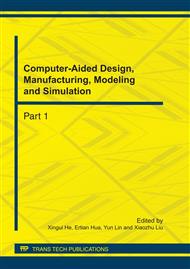[1]
Wang W, Zhang J T, Chai T Y. A survey of advanced PID parameter tuning methods[J]. Acta Automatica Sinica, 2000, 26(3): 347-355.
Google Scholar
[2]
Liang J J, Qin A K, Suganthan P N, et . al. Comprehensive learning particle swarm optimizer for global optimization of multimodal functions[J]. IEEE Trans Evol Comput, 2006, 10(3): 281-294.
DOI: 10.1109/tevc.2005.857610
Google Scholar
[3]
Kennedy,J., Eberhart, R, C . Particle Swarm Optimization . In: Proc. of IEEE International Conf. on Neural Networks, Pearth, Austrailia, pp, 1924-1948. (2005).
Google Scholar
[4]
Liang, J, J, Qin A, K, Suganthan, P, N Bhaskaar, S Comprehensive Learning Particle Swarm Optimizer for Global Optimization of Multimodal Functions. IEEE Transactions on Evolutionary Computation 10(3), 281-295(2006).
DOI: 10.1109/tevc.2005.857610
Google Scholar
[5]
R H jin, Z H yuan, J P Jun, Y Fan, J J Li, The pattern synthesis of antennas based on a modified PSO algorithm[J]. Chinese Journal of Radio Science, 2006, 21(6): 873-878.
Google Scholar
[6]
Turkington D H, Cooke N, Moss P J , et al. Dvelopment of a design procedure for bridges on lead-rubber bearings. Engineering Structures, 1989, 11(1)2-8.
DOI: 10.1016/0141-0296(89)90026-6
Google Scholar
[7]
Hu Shousong Automatic Control Theory (Version 4)[M]. Beijing: Science Press, (2001).
Google Scholar
[8]
Lin Lin Ou, Yan Ying Gu, Wei Dong Zhang. The optimal PID parameter tuning method bases on gain margin and phase margin[J]. Control theory and applications, 2007,24(5): 837~840.
Google Scholar
[9]
Huang Zhonglin. Control System MATLAB Calculation and Simulation(Version 2)[M]. Beijing: National Defence Industry Press,(2004).
Google Scholar
[10]
Takahiro S, Kenko U. Gain Scheduling control For Electro-hydraulic Servo System Considering Time-delay Modeling Erro[C]. Proceeding of the 2004. IEEE International, 2004(2): 1709~1716.
DOI: 10.1109/cca.2004.1387623
Google Scholar
[11]
Xu Xiaoping, QIAN Fucai, WAN Feng. Novel method of system identification based on modified particle swarm optimization algorithm[J]. Systems Engineering and Electronic, 200e. 30(11): 2231~2236.
Google Scholar


